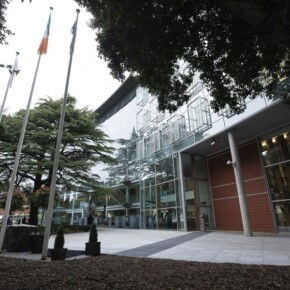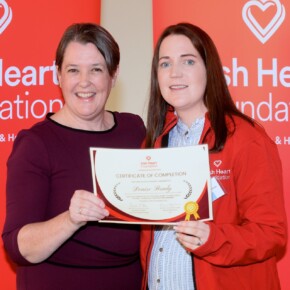Thirteen fab facts about Cabra
Dublin People 18 Jul 2016
CABRA is a fabulous place to live and there’s lots to love about this quintessential Northside suburb. But how well do you know it? Here are a few Cabra facts, some you’ll know and some that might surprise you.
• In 2006 the railway bridge on Fassaugh Road was named after one of Cabra’s most famous sons, Liam Whelan. Busby Babe Whelan was one of eight Manchester United players killed in the Munich air disaster in 1958. Last year the bridge was replaced as part of the Luas Cross City project but it still remains the Liam Whelan bridge.
• Cabra’s most infamous resident was arguably John Toler, 1st Earl of Norbury, otherwise known as the Hanging Judge. He lived at Cabragh House on the corner of the present day Fassaugh Avenue and Rathoath Road and as his moniker suggests, was notorious for dishing out death sentences. He constantly harangued and insulted Robert Emmet before sentencing him to death. He died himself in 1831 and Cabragh House was demolished in 1939 to make way for local authority housing.
• Several famous faces have performed at he old 1,600 seat Cabra Grand Cinema on Quarry Road. Among them were Siouxsie and the Banshees, The Ramones, Duran Duran and Boyzone. The Cabra Grand was opened on April 17, 1949, by then Dublin Lord Mayor, John Breen.
The Cabra grand cinema pic.twitter.com/rQEcrSQdgo
— Photos of Dublin (@PhotosOfDublin) January 12, 2014
• Naomh Fionnbarra GAA Club was the first in a Dublin parish to run road leagues, and they are still run today. Founded in 1945 to promote and develop Irish culture and language, the club was an amalgamation of two clubs called Emerals and O’Rallelly’s.
• Steve Collins fought his way from Cabra to the very top of the boxing world, winning both the WBO World middleweight and super middleweight titles but older residents also remember another local boxing legend. Eddie Tracy was a great amateur boxer and was picked for Ireland to box in the Olympics in Mexico in 1968. He reached the quarter finals before being beaten by the eventual gold medal winner.
• The Church of the Christ the King has been at the heart of the local Cabra community since it was opened in 1933 by Archbishop Byrne. It proudly boasts its statue of Christ the King, which was sculpted in Trieste. This statue was buried in the ground during the war but was later crated in sections and dispatched to Cabra. It finally arrived at its destination in the 1950s.

• Famous 19th century physicist, astronomer and mathematician William Rowan Hamilton, is credited with discovering complex quaternions while walking by the Royal Canal at Broom Bridge. Recognised as one of the greatest mathematicians ever, he had a eureka experience and scribbled down the fundamental formula for quaternions near the bridge.
• Thousands of young Dubliners did their apprenticeship courses at the old FÁS training centre at Bannow Road. It opened in 1978 and closed its doors on Christmas Eve, 2010.
• Cabra was a mainly rural part of north Dublin in 1916 but there were still some significant events relating to the Rising in the area that Easter. Cabra was the first place where British troops used artillery in Dublin during the rebellion. About 50 Volunteers from the First Dublin Battalion put up barricades outside St Peter’s Church, to block the progress of British troops into the city from the Navan Road and manned the bridges over the Royal Canal. Earlier this year the local community unveiled a plaque dedicated to the women of Cumann Na Mban.
• Famous Dublin character ‘Bang Bang’ was born in Cabra as Thomas Dudley in 1906. Dudley was raised in an orphanage and became obsessed with cowboy films as a child. He was well-known around the city for jumping onto buses with a mysterious oversized key that he would point at passengers while shouting his famous catch phrase.
• From about 1480, the manor of Cabra was held by a branch of the Plunket family, later ennobled as Earls of Fingall, whose main residence was Dunsoghly Castle near Finglas.
• Cabra has been home to several famous faces over the years but two animated characters who became household names are often overlooked – Beany and Barney. Batchelors beans have been made in Cabra since the 1930s and their famous cartoon charaters are the stuff of pop culture legend.
• Cabra singer and caberet star Dicky Rock started out his career as a local choir boy. Between 1963 and 1972 he was one of the frontmen of the Miami Showband, and had 13 top ten hits with them including seven number ones.











